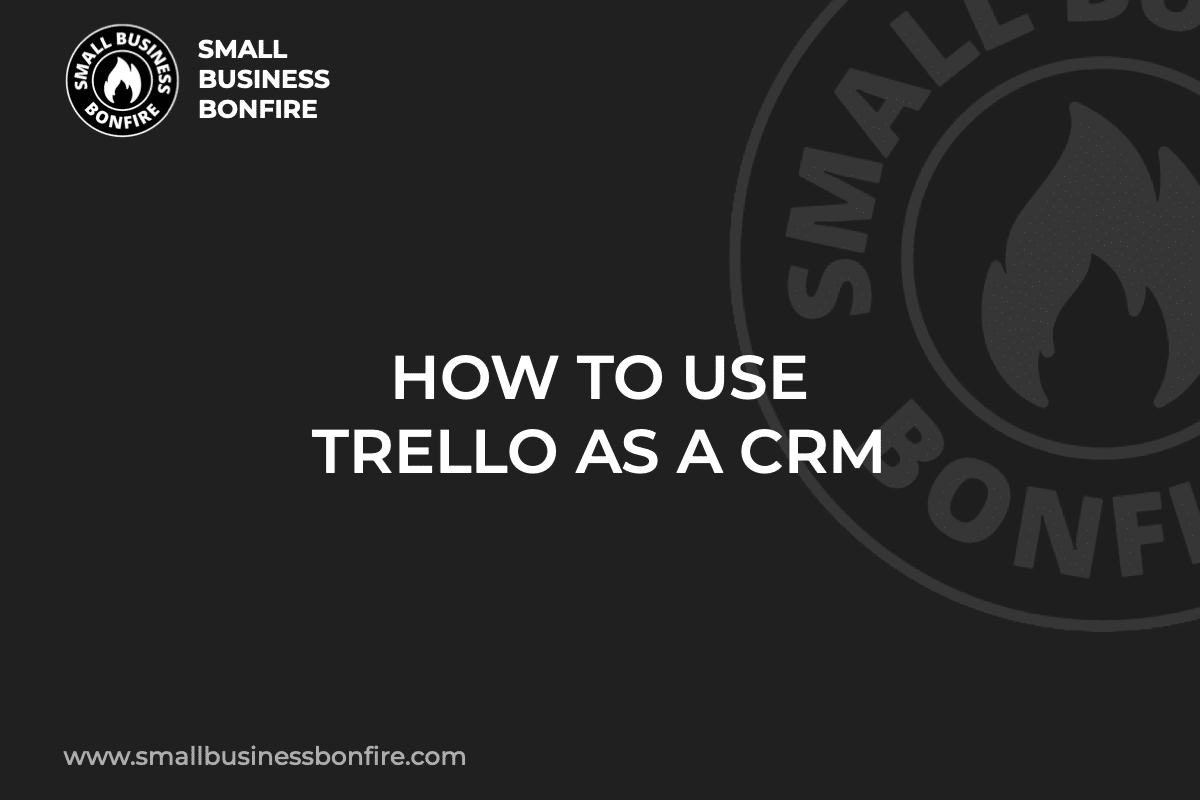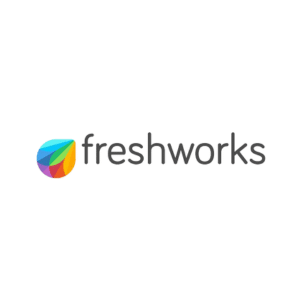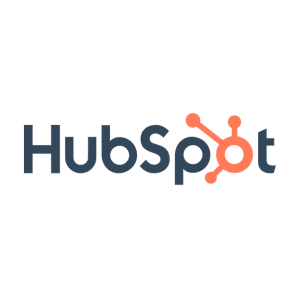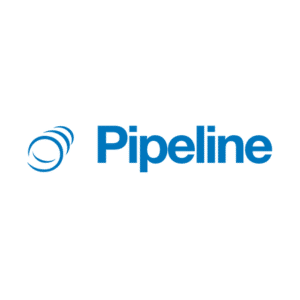Is the list of CRM providers overwhelming you? You want to choose the best software for your company but can’t seem to find something intuitive and simple!
If that sounds like your situation, you’re in the right place! Small businesses everywhere need help finding the best customer relationship management system to meet their needs.
Hi! My name is AJ! After selling my company for multiple seven figures, I launched Small Business Bonfire. That way, entrepreneurs like YOU can avoid the mistakes I made while building my business.
If you’ve been looking for a CRM system, it’s crucial to consider Trello! Trello helped my team organize our sales tasks faster than we thought possible.
So, if you’re ready to learn about utilizing Trello to help your sales team work more efficiently and productively, keep reading!
Key Takeaways
- Using Trello as a CRM is a simple way to organize tasks associated with your sales pipeline.
- Establishing a sales process helps your sales reps work more efficiently.
- Third-party integrations can take your CRM system to the next level.
- Trello works excellently with CRM, communication, and other third-party tools.
SBB Featured Partners
Step 1: Create a Trello Board
The first step is creating a Trello board!
The main Trello page is where you can start workspaces, allowing users to do the following things:
- Host boards
- Manage users
- Configure system settings
As you create a Trello board, you can customize the following things:
- Background color
- Visibility settings
- The name of the Trello board
What is the purpose of Trello boards?
These boards allow your sales team to store data, collaborate on marketing or sales tasks, and stay updated on activity progress.
Therefore, as you create a Trello board, ensure it has a unique function or specific activity!
Step 2: Establish Your Sales Process (Pipeline) Steps
The following step is creating a sales pipeline.
A sales pipeline details each step a potential customer takes while becoming a paying customer.
Organizing the sales process is beneficial for the following reasons:
- It organizes sales leads
- Helps your sales team work efficiently
- Ensures sales reps pursue the most qualified leads
Below, I’ve listed the typical steps a sales pipeline includes!
Prospecting
Prospecting is the initial stage in the sales process where you identify potential customers, or ‘sales leads.’
Typically, prospecting involves the following steps:
- Researching customer contacts
- Reaching out to leads
- Following up with individuals or businesses that have shown interest
Usually, businesses aim to find as many prospects as possible.
Although most prospects won’t convert into paying customers, it’s better to work with a large pool of individuals and discover the qualities your target audience carries.
Lead Qualification
Lead qualification determines whether a prospective customer has the potential and interest to purchase your product or service.
Lead scoring is an excellent tool to utilize while qualifying leads.
With lead scoring, you assign each prospect a numerical value based on how likely they are to convert into a paying customer.
Lead qualification ensures your team pursues the leads who are likeliest to convert!
Meeting or Demo
The next step in the sales process is having a meeting with the potential buyer.
During this meeting, your sales team does the following things:
- Demonstrate how the product or service works
- Explain how the product can solve the prospect’s problems
- Answer questions
- Persuade leads
During the meeting, ensure your sales reps aren’t too pushy, as this can prevent a prospect from purchasing.
Proposal
The proposal stage is when the sales rep provides a detailed proposal to the potential customer, outlining the product’s benefits, pricing, and other relevant information to convince them to buy!
Negotiation
Sometimes, a company can negotiate the price of its products or services depending on the circumstances.
Remember, it’s crucial NOT to negotiate a price point that cuts into your profit margins!
Deal Won/Lost
The final stage of the sales pipeline is whether your sales team wins or loses the deal.
A win is a sale!
Step 3: Create Your Sales Pipeline as Trello Lists
After defining your sales pipeline, you must create it into a Trello board as a list.
Lists allow you to organize projects with defining characters such as:
- Assigned
- In progress
- Complete
That way, you can see the progress of each task within your sales operations.
Trello CRM has drag-and-drop capabilities, allowing users to move lists around quickly!
Step 4: Create Trello CRM Cards
Step four is creating Trello cards!
A card acts as a record representing any of the following things:
- Lead
- Prospect
- Customer
- Specific deal
To create a card, simply select “Add card” and enter the information into the custom fields.
After that, you can drag the card into the correct stage of your sales process.
Step 5: Invite & Train Team Members
After setting up the Trello boards and cards, it’s time to invite and train your sales team!
Click the “Share” button and enter the email address of the employees you wish to invite.
After that, you can determine each member’s visibility or control level.
The various levels of visibility include the following:
- Admins: These people can edit the Trello boards, lists, cards, and control board settings and users.
- Members: These people can add and edit boards, lists, and card
- Observers: These people can only view records on the boards
Step 6: Integrate Third Party Tools and Automation
An excellent aspect of Trello CRM software is that you can include third-party integrations or a “power up” to enhance your CRM tool.
A power-up allows teams to integrate Trello with third-party products to improve functionality.
For instance, some of the popular third-party tools include the following programs:
- Slack
- Google Workspace
- Microsoft Teams
- Zoho CRM
Also, Trello offers other native power-ups like workflow auctions and data synchronization.
So, even though Trello doesn’t require advanced sales management knowledge, you can still create a powerful CRM tool with add-ons.
Step 7: Refine & Update Your Trello CRM Process
The final step in implementing Trello as a CRM system is something small business owners often forget.
Reviewing and updating CRM tools is crucial to continually improving!
Meet with each department in your company and review your Trello boards, sales processes, etc., to identify weak points and areas of improvement.
Remember, the purpose of CRM tools is to improve customer relationships.
Therefore, you must ALWAYS be searching for ways to understand your customer contacts better, streamline the sales funnel, and earn more revenue.
Trello as CRM Pros and Cons
When you use Trello as a CRM system, there are pros and cons to consider.
Of course, no CRM tool is perfect.
Still, it’s crucial to understand the upsides and downsides of anything before you implement it into your company.
Trello Pros
Some of the advantages of using Trello as a CRM tool for your company include the following:
- The free plan is beneficial for many sales processes
- The drag-and-drop style is accessible to each employee
- It’s easy to track calendars and project timelines
- Custom fields all users to make the cards unique to their company
- It acts as an effective CRM and project management tool
As you can see, this customer relationship management software is extremely beneficial, especially for small businesses!
Trello Cons
On the other hand, the downsides of Trello CRM boards include the following things:
- It’s harder to track multiple sales processes and projects at once
- The software relies primarily on Kanban boards (which aren’t ideal for every project management tool)
- The free plan only allows for files of 10MB or less
Although these cons aren’t significant, they’re worth considering!
When to Use Trello Vs. Upgrade Your CRM
Trello is a perfect fit for small businesses and startups looking for an inexpensive, easy-to-use, and versatile CRM tool.
Further, Trello is particularly beneficial for teams that prefer visual, drag-and-drop style interfaces and require straightforward sales process tracking.
However, a more advanced CRM might be necessary as the business scales and the number of concurrent sales processes and projects increases!
Businesses should consider upgrading their CRM system when they encounter the following circumstances:
- They need detailed sales analytics
- The company demands comprehensive customer interaction tracking
- The company could benefit from robust automation capabilities
Trello CRM (Customer Relationship Management) Paid Alternatives
If you’re looking for another program to add alongside Trello, there are three alternatives to consider, including:
- HubSpot
- Pipedrive
- EngageBay
Here’s everything you need to know about these CRM providers!
HubSpot CRM
HubSpot is one of the most popular CRM providers.
The company offers a free version of their services.
Still, the paid plans are really where it’s at, allowing teams to utilize powerful marketing and sales tools.
For instance, some of the marketing tools HubSpot offers include the following:
- Email campaigns
- Online ads
- Web forms
- Social media capabilities
- Automation tools
HubSpot’s CRM Suite is a bit pricey for enterprises, with plans ranging from $1,000 to $5,000.
However, there is a Starter plan available for $20 monthly for smaller businesses.
One of the best features of HubSpot is that users can get a free demo to test the service before committing to it long-term.
So, if you’re looking to boost sales and utilize customer data to the fullest, HubSpot is the CRM provider for you!
Check out our full HubSpot CRM review!
Pipedrive CRM
Pipedrive is a CRM platform specifically designed for sales reps, allowing your business to scale quickly!
Trusted by over 100,000 companies, Pipedrive allows you to create sales process stages, track progress, and automate tasks.
More specifically, with Pipedrive’s AI features, you can allow AI to identify opportunities that will lead to more closed sales!
Some of the most-liked features Pipedrive offers include the following:
- Visual sales pipelines: You can see your company’s ENTIRE sales process in one place and update them using drag-and-drop functionality.
- Customizable features: You can customize your pipeline to match your sales funnel.
- Collaboration tools: You can easily collaborate on deals and activities and share updates on everything that’s happening.
- Activity reminders: You can schedule reminders for your team’s sales activities and stay on top of all your deals.
One of my favorite features that Pipedrive offers is revenue forecasting.
Pipedrive’s revenue forecasting tools can predict sales volume and revenue based on your sales funnel.
Also, Pipedrive allows you to see automatic calculations as your team updates current deals.
Like HubSpot, Pipedrive offers free trials for new users!
And you don’t have to submit your credit card information before getting full access to Pipedrive’s tools.
Overall, Pipedrive is the ideal CRM option if you’re looking to boost customer relationships and sales!
Do you want to learn more about Pipedrive? Take a look at our in depth Pipedrive review!
EngageBay CRM
EngageBay is a single platform that supports your marketing, sales, and customer support teams.
Also, EngageBay is free for up to 15 users, making it perfect for small business owners.
This CRM provider’s software allows you to store unlimited contacts and build stronger customer relationships effortlessly.
On top of that, you and your team can keep track of customer interactions and data in one place.
Some of EngageBay’s most popular features include:
- Contact management tools
- Deal management tools
- Sales automation
- Appointment scheduling
Lastly, EngageBay is ready to use, meaning implementation couldn’t be easier!
Check out our extensive EngageBay review!
Final Thoughts on Trello CRM Software
There’s everything you need to know about Trello!
As you’ve seen, Trello is excellent for organizing tasks and assigning things to specific employees.
With Trello, it’s easier to see the progress of each task and ensure every prospective client gets the attention they deserve.
Is Trello the right CRM tool for you and your team? Let us know in the comments section below!
Newsletter Signup
Join The Leads Field Guide Newsletter for tips, strategies and (free) resources for growing your leads, and closing more deals.




